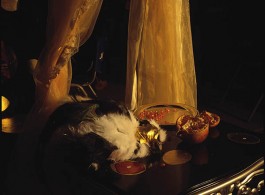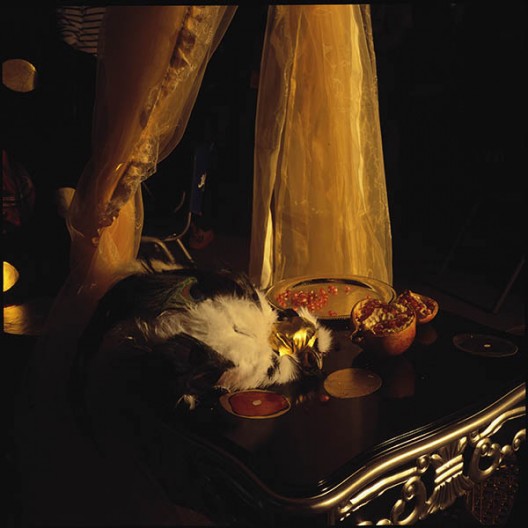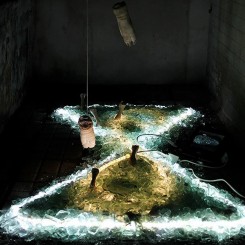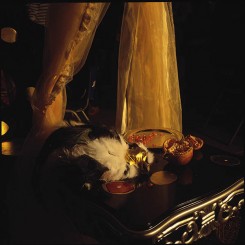“From Desire to Desire”
Jiali Gallery, Beijing
For this exhibition at Jiali I have a precise angle on how to present her work. Instead of commissioning a site specific installation, I have tried to put together different pieces that can convey a broad perception of Zhu Yu’s research around two references: a western one and a Chinese one.
The Western one is Jacques Lacan’s definition of “objet petit a”.
The Chinese one is an interesting and lesser-known philosopher of the late Ming Dinasty, Li Zhi, who wrote two books that challenged the status quo, respectively “A book to burn” and “A book to hide.”
In 1957, in his Seminar Les formations de l’inconscient, Lacan introduces the concept of objet petit a as the imaginary part-object, an element which is imagined as separable from the rest of the body. Later he articulates objet a with the term agalma (Greek, an ornament): “a precious object hidden in a worthless box”, so objet petit a is the object of desire which we seek in the Other.
The “box” can take many forms, all of which are unimportant, since the importance lies in what is “inside” the box, the cause of desire.
In a further elaboration, objet petit a is re-defined as a leftover, the remnant left behind by the introduction of the Symbolic in the Real, and also as the “surplus meaning”, a surplus of jouissance that is always produced when a signifier attempts to represent the subject for all other signifiers.
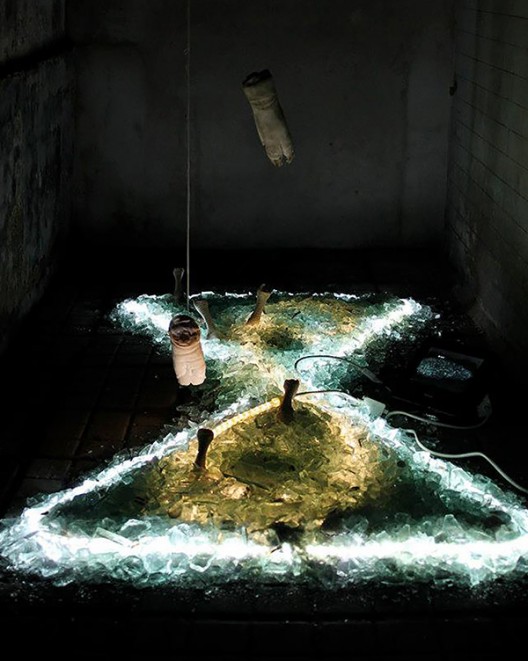
“FROM DESIRE TO DESIRE” INSTALLATION, 1M X2M, Material: Broken pieces, Led lights, Mirror, Pigs feet and Chicken feet, 201
Slavoy Zizek, describes petit objet a, in relation to Alfred Hitchcock’s MacGuffin, as a “hole in the center of the symbolic order.”
To produce this level of perception, Zhuyu’s installation “From desire to desire” is recreated in Jiali’s main space, (appropriately darkened), suggesting a ritualistic mis-en-scene where a snake light on the floor designs an “x” outline filled with broken glass surmounted by the sharp-edges cold steel surfaces of an old bed. What does the symbol stand for? What happened here? Is this where the victim was or is going to be abused?
The piece is reinforced and completed by other elements: a spectral photo of a empty raincoat, another one of the artist during her pregnancy, posing as one of the hooked arms of a swastika, a golden cage containing bones, and a small trompe l’oeil “Black Chicken Empress”. There might be a transparent funerary glass urn and a round mirror covered with black felt. A cylindrical totem adorned with a collages of random people’s facial details cut and recombined (as if they all had been part of a symbolic dissecting practice) hangs from the ceiling.
Perhaps the same rooster which appears in the trompe l’oeil painting is walking around in the scene. Perhaps we just imagined it.
These are all physical imaginary part-objects separated from the rest of the body, the “worthless boxes” with many different forms, which contain and remove the cause of desire.
In this cave, petit objet a is replicated over and over, but instead of witnessing structures dissipated into chaos, we feel a different order kicking in, harder to accept.
From there on, like “Kurtz’s snail crawling along a sharp razor blade” every move could cut our belly open as it exposes the hidden double nature of things.
We are reminded how maternal instinct is also the “fascism of the child,” (Zhuyu’s own words to describe the social implications of giving birth in Chinese society) and loss, decay, and death (the bones, the ashes, and the ghostly raincoat image as a post-modern “vanitas”) will inevitably catch up with us in our golden cage.
Nevertheless, there is something dangerously attractive in this cave, something alive, still capable of movement and transformation.
Outside, in the “desert of the real”, all movement is frozen by the empty repetition of the pristine bureaucratic machine and of the polished consumerist kaleidoscope. And to this desolation, Zhuyu responds with a symbolic act of humor, contextualized in a provocative metaphor about contemporary Chinese art. She identifies the problem as the fact that even in such times of apparent quick change, power and authority rarely change hands. The “desert of the real” of culture is a frozen apparatus that does not move and whose rules, behind the progressive façade, are mainly about self-preservation.
For this piece “ICE_Chinese Contemporary Art”, she collected images online of the most important local and foreign players of Chinese contemporary art and froze them in ice cubes inside an industrial fridge. During the opening of the show she will gradually take the ice cube sets out of the fridge and put them on Jiali’s glass veranda ceiling to melt in the summer heat.

